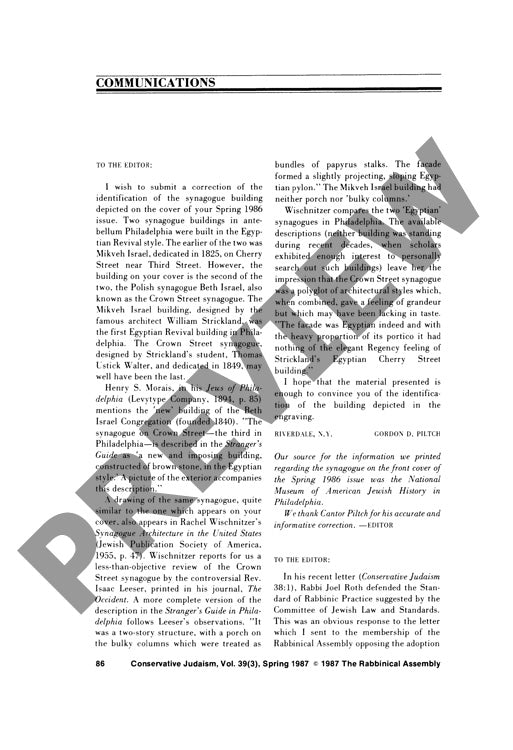Communications
Couldn't load pickup availability
A long-misidentified Egyptian Revival synagogue in antebellum Philadelphia reveals the critical importance of precise architectural documentation in American Jewish institutional history. Through comparative analysis of contemporary descriptions and architectural records, this research corrects the historical record by distinguishing between the Mikveh Israel building (1825) designed by William Strickland and the Beth Israel Crown Street synagogue (1849) designed by Thomas Ustick Walter. Beyond this architectural clarification, the scholarly communications examine pivotal debates in Conservative Judaism, particularly the ongoing tension between matrilineal and patrilineal descent principles and their halakhic implications. The discussions critically assess Jacob Neusner's controversial framing of "Judaisms" as discrete social constructs, challenging this pluralistic approach against traditional views of Judaism as a unified, though varied, tradition. Additional scholarly exchanges evaluate theological responses to the problem of evil, with particular focus on Mordecai Kaplan's reconstructionist theology and its relationship to divine process theology. These interconnected discussions illuminate the persistent tensions between traditional Jewish scholarship and contemporary academic methodologies, while demonstrating how rigorous historical documentation shapes our understanding of Jewish institutional identity within secular academic frameworks.

More Information
-
Physical Description
-
Publication Information
Published 1987
ISBN
-
Publication Credits

